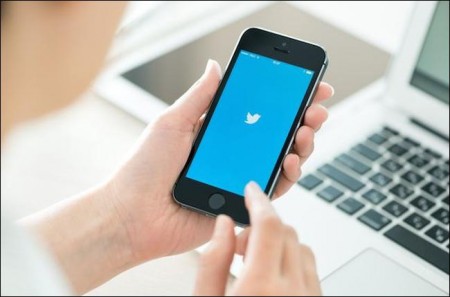By uploading a photo from your phone, you could be sharing more than you intended.
1. “Want to make a big impact? Good luck.”
Twitter, the social-media platform that lets users communicate in short posts called tweets, has exploded since its launch in 2006, from 15,000 accounts then to 200 million today. “Active users” attract an average of just under 5,000 followers (those who choose to receive a given user’s tweets automatically), according to independent research site Twitalyzer — but the number of subscribers isn’t necessarily the best measure of impact. “Not all Twitter accounts are created equal,” says Twitalyzer creator Eric Peterson.
Harvard Business Review found 10 percent of users create 90 percent of Twitter’s content. But while Lady Gaga and President Obama rank among the most followed (roughly 12 million and 9 million, respectively), Twitalyzer each day deems a different user “most influential” — like San Francisco “interaction designer” Joshua Kaufman, who has fewer than 7,000 followers. “It’s not a popularity contest,” says Peterson; it’s the frequency and volume of communication — how often and with whom you converse — that determines who’s making a mark. Twitter, for its part, says you can have an impact whether you have “five followers or 5 million.”
2. “It’s not just photos that you’re sharing.”
Ever snapped a photo with your phone, then uploaded it to post on Twitter? You may have shared more than just an image. ICanStalkU.com was set up by tech consultants to alert Twitter users that their smartphone pics are embedded with GPS data, making it so easy to determine your precise latitude and longitude that “a first grader could stalk someone,” says cofounder Larry Pesce. For its part, Twitter’s image-hosting service strips geotagged data from phone-uploaded pics, but third-party services like TwitPic are still vulnerable. Twitter has twice suspended ICanStalkU’s account, calling the site’s cautionary tweets spam. But Pesce says, “If we thought of it, someone else much more evil and smarter has been using it.”
3. “Social media is a slippery slope.”
You don’t have to be a congressman with an unfortunate surname for Twitter to have a disruptive impact on your personal life. Tracy Musacchio, a college instructor in New York, says a friend “likes to Twitter-stalk” her, leading to off-line arguments about things she’s tweeted. And couples therapists are reporting that discordant views on Twitter and other virtual-media etiquette are being cited more often as stressors in relationships.
Tara Fritsch, a marriage counselor in Oklahoma, says she helps about half her clients with social media related issues. Sites like Twitter don’t cause partners to be unfaithful, she says, but “simple opportunity” can lead some to take the plunge. (Twitter says it provides guidelines for acceptable behavior, but “no policy could prevent” users from engaging in extramarital affairs.) Bottom line: “Don’t kid yourself into thinking that things that happen in the virtual world have no impact on the real world,” Fritsch says.
4. “We’re helping journalists…”
Many reporters and news outlets are turning to Twitter for instant material and sources for breaking stories. Its efficiency in generating swift and concise feedback on everything from viewer reactions to American Idol to on-the-ground developments after natural disasters have made Twitter a resource for journalists looking to tap into civic discussion. Gregory Galant, CEO of Sawhorse Media, says that before Twitter became mainstream, it was a forum for journalists. His website, Muck Rack, serves as a directory of journalists, which the public can use to verify whether tweeters are credible reporters — important, since news often gets broken on Twitter before major news outlets report it. For example, he says, in June 2009, “news of Michael Jackson’s death was trending among the journalists we follow” before ever hitting the mainstream media.
5. “…but also hurting them.”
The death of Osama bin Laden was tweeted by Donald Rumsfeld’s chief of staff Keith Urbahn more than an hour before President Obama’s official address to the nation and before most news outlets had posted it on their Web pages. That tweet turned out to be true. But as more top stories get broken on Twitter, journalists using the site to try to keep up with a never-ending news cycle sometimes rush to report information that isn’t accurate.
Thomson Reuters, for instance, was among several news outlets that erroneously tweeted Rep. Gabrielle Giffords was killed in the Arizona shooting in January. (A spokesperson for Reuters says the organization is now enforcing a stricter social-media policy.) And just how effective are the tweets by major news outlets in drawing users to their websites? According to a study by the Pew Research Center’s Project for Excellence in Journalism, which examined traffic at 21 top news sites in the U.S., links from Twitter drove visitors to only nine of those sites, and Twitter referrals accounted for 1 percent or so of total traffic, on average.
Visits: 60



